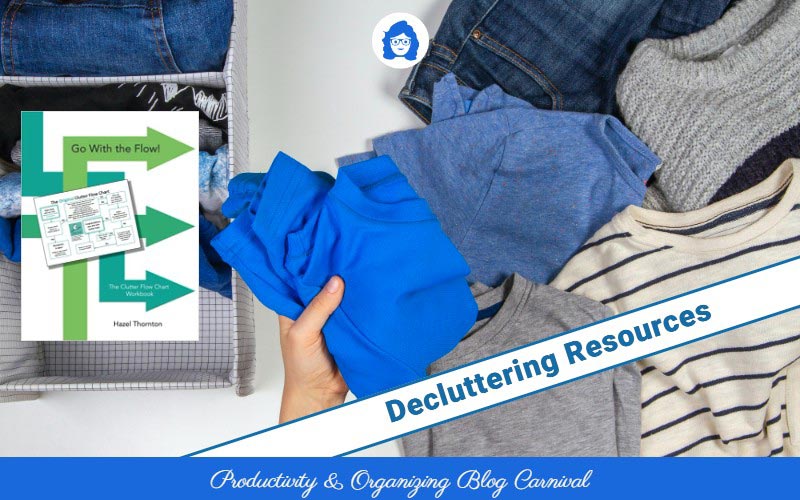The ‘Subscription Box Detox’: Helping Clients Break Free from Consumerism and Curate Meaningful Collections
This page may contain links to Amazon.com or other sites from which I may receive commission on purchases you make after clicking on such links. Read my full Disclosure Policy

The dreaded subscription box graveyard can take many shapes in a client’s home. You’ve probably seen it before, hidden away in closets, stacked up in the corner or repurposed as storage containers. Perhaps the boxes are long gone, but the sample-sized products and miscellaneous assortment of items still haunt the space.
It happens — subscription boxes are a convenient way to engage consumers and provide services like meals, groceries or health products. However, from an organizer’s perspective, you may notice how much clutter they accumulate. To break the cycle, you can support clients by encouraging a “subscription box detox” and breaking free from consumerism.
Understanding the Subscription Box Allure
Personalization and convenience are key attractors for subscription boxes. The relationship between the consumer and the provider can almost feel intimate as customers receive products they can rely on and try new things based on the established rapport. The boxes come right to their door, taking away any stress of travel, shopping or researching.
However, the products won’t hit the mark every time. Inevitably, customers will receive something that might not meet expectations or needs. Or perhaps they will find the exact right product, but keep receiving different ones to try each month. This cycle leads to increased clutter and detrimental levels of consumerism.
The cost of convenience and customization may consume a client. Many fall into a sunk-cost fallacy trap or experience FOMO when they aren’t getting the latest products. Fees add up — the average American adult spends $90 on subscriptions each month. As the waste and clutter from subscription boxes accumulate, clients may get stuck in an organizational crisis.
So, how do you declutter subscription boxes? Instead of focusing solely on decluttering for a short-term change, you can help pivot the client’s subscription habits to prioritize meaningful consumerism in the long term.
Curating Intentional Collections
When organizing subscription boxes, help your client identify priorities, passions and values. For example, if you’re assisting a client who has a subscription service for international snacks, see if you can identify what they’re looking for each time these boxes come. Are they looking to add more exciting flavors to their day-to-day routine? How might a different subscription box they also receive, such as one for global coffee flavors, help them achieve that goal?
By understanding a client’s true wants and values beyond just clearing clutter, you can help them create a space for their priorities and associated items to minimize the rest. For instance, if they love health and wellness, you can help them transform an often underutilized space, like the garage, into a home gym where they can use and display their subscription items.
You can incorporate a “museum method” to display items and rotate them out, keeping spaces clear and avoiding wastefulness with items that might otherwise go unused. Curating collections is an effective way to ensure a client’s interests are valued and their items are not wasted. It can also help them mentally organize their priorities, allowing them to shift their attention and finances away from subscriptions to more specific items and interests.
An Organizer’s Guide to Auditing Subscriptions
Transitioning away from subscriptions and ending them altogether is easier said than done. To help your client identify which subscriptions are serving them and which to veer away from, consider the following auditing tips you can both work through:
- Inventory and categorize: Determine the types of products the service provides and categorize them. Your client can even rank them depending on their relevance to their goals.
- Conduct a cost-benefit analysis: Identify the cost of each subscription and calculate the value it brings and the waste it contributes. Encourage spreadsheets or apps to maintain digital organization, too.
- Appreciate the value: Remind your client that subscription boxes are not shameful and provide a valuable service. Recycle or repurpose when possible to respect each item’s value and help clients reassess their space and needs.
Changing habits and getting rid of items is rarely easy. Your client may need your guidance to filter their subscriptions, but ultimately, they have the power to implement a new lifestyle.
Mindful Consumption to Break the Consumerism Cycle
Subscription boxes have plenty of benefits, but they can also strain finances, personal organization and mindful consumption practices. By auditing subscriptions, decluttering unwanted items and curating meaningful collections, organizers can empower clients to break free from consumerism and create intentional spaces. Consume less, waste less and appreciate more.
Want to connect with other professionals who “get” what you do?
Join the Productivity & Organizing Peer Support (POPS) Circle — a virtual community where business owners like you build genuine relationships, share ideas, and grow together.





Yes, I often run into these. My most recent experience was a client with a pet toy/snacks monthly delivery. They were all stacked in a closet. I’ve also frequently run into craft kits for kids. A nice idea, but they quickly get out of control. Even subscriptions to medications can overwhelm a space when someone stops taking the medication but never cancels the order.
Processing these boxes is key, within 24 hours of when they arrive.
In many cases, if they are piling up, it’s time to cancel the subscription. Love your tips for the auditing process!
Hopefully you’ve never seen anything as bad as this: https://www.youtube.com/watch?v=q3PHewHhwUI !
I see many ads for these services and have been tempted a few times to sign up for something, either for myself or as a gift, but I’ve never done it – I’m too worried about ending up with a bunch of tea (or whatever) that I don’t like!
Interestingly, with the exception of a few clients who get meal kits delivered, I don’t think I have every had a client who received subscription boxes. I keep expecting to see them for either the international snacks you describe (because: yum) or cosmetics, but thus far, nada. I know they are generally popular, but I suspect that (at least in my part of the country) people really prefer to make purchases the old-fashioned way, in stores, where they can put their hands on the merchandise before making a decision. Thus far, the issues my clients face have been service subscriptions (like streaming video and audio, digital games, etc.).
I love the “museum method” you reference for handling tangible collections, in general; I’ve been recommending it for more than 20 years since the first time I saw a friend who had so many snowmen (figurines, paintings, knick-knacks) that she had developed what a I called a “permanent collection” and then a “rotating collection” for displaying different aspects at different times of the year. She still collected (in a discerning way) but didn’t feel everything needed to be out. These are all great points, and yes, intentionality is key.
Subscription boxes seem practical for consumables, like treats for humans or pets, but I’ve seen them for socks and other things you only need a certain number of. Good strategy for the businesses, not so much for the customers.